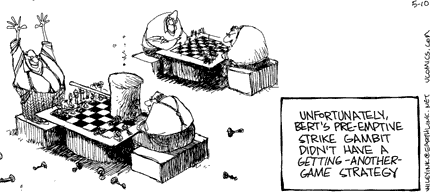Why am I so tempted to forego tactical studies and exclusively study openings? There are lots of reasons:
1. Instant gratification.
The benefits of opening study show themselves over the board almost immediately. The opening patterns I study are very likely to show up over the board (the opening position, for instance, is the only position guaranteed to show up in every game of chess). During an hour of studying an opening, it is easy to learn most "book" lines three to four-ply deep. When these positions occur OTB, it is very satisfying.
Compare that to tactical study: it takes tons of work to build up tactical pattern recognition skills. Unfortunately, I can play like a GM for a few moves in, but unless I am a tactical badass, it won't help me that much in my win-loss ratio.
2. Trickery is fun
In many lines, if your opponent makes reasonable looking moves, they are actually setting themselves up for a nasty trap (e.g., the Fried Liver attack). Also, it is important to learn an opening well so that I don't pull such boners myself. Frankly, I don't know what it says about my character that I get such a kick out of zinging someone.
The fact is, good opponents don't usually fall for opening pickles. If I want to excel at this game, I need to be able to spot tactics in the middle game.
3. Opening: a microcosm of the middlegame
Slowly building up an opening repertoire makes me think deeply about positional factors such as pawn structure and space. I would hope that this will help me appreciate such factors in the middlegame.
4. Opening study makes me feel smarter.
I am good at memorizing crap (this, not any brilliance on my part, made me an exemplary biology undergrad). For some reason, I am ridiculously slow to learn tactical patterns. It is very frustrating when, after studying tactics for all this time, I still miss elementary pins and the like in real games.
This is a stupid, egotistical reason to focus on openings. I think all chess instructors would rightly say to focus your energy on the weakest aspect of your game.
While 1-4 provide the
reasons for why I like studying openings so much, they certainly don't
justify such study. Hence, I have imposed a
ten tactical problems rule on myself. No opening study until I have already done at least ten tactics problems in the Circles that day!




